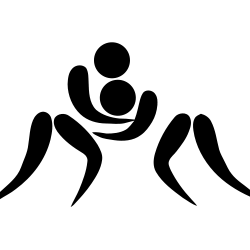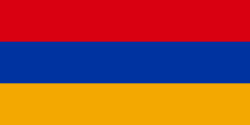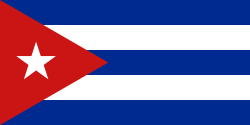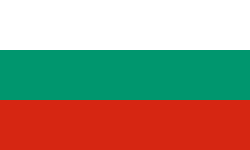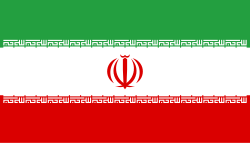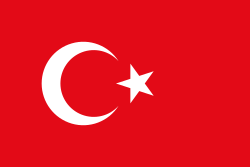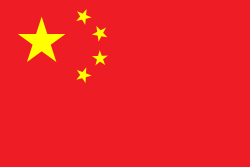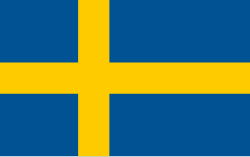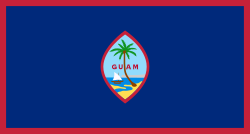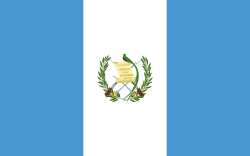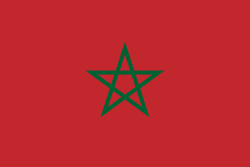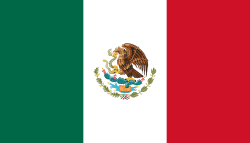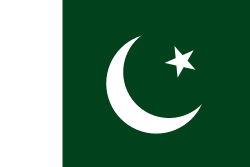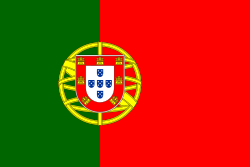Zápas na Letních olympijských hrách 1996
| Zápas na Letních olympijských hrách 1996 | ||||||||||||||||||||||||||||||||||
|---|---|---|---|---|---|---|---|---|---|---|---|---|---|---|---|---|---|---|---|---|---|---|---|---|---|---|---|---|---|---|---|---|---|---|
| Základní údaje | ||||||||||||||||||||||||||||||||||
| Pořadatel | Mezinárodní zápasnická federace Mezinárodní olympijský výbor | |||||||||||||||||||||||||||||||||
| Dějiště | Světové kongresové centrum Gruzie | |||||||||||||||||||||||||||||||||
| Datum | 19. července - 2. srpna 1996 | |||||||||||||||||||||||||||||||||
| Soutěže | 20 (10 řecko-římský, 10 volný styl) | |||||||||||||||||||||||||||||||||
| Startující | 401 mužů z 75 zemí | |||||||||||||||||||||||||||||||||
| Soutěže | ||||||||||||||||||||||||||||||||||
| ||||||||||||||||||||||||||||||||||
| ||||||||||||||||||||||||||||||||||
Zápas na Letních olympijských hrách 1996 v Atlantě nabídl souboje o dvacet sad medailí, a to v deseti váhových kategoriích ve volném stylu a v deseti v řecko-římském. Soutěže probíhaly v Hale E Světového kongresového centra (Georgia World Congress Center) v Atlantě.
Medailisté
Muži
Volný styl
Řecko-římský zápas
| Kategorie | |||
|---|---|---|---|
| 48 kg | Jižní Korea (KOR) | Bělorusko (BLR) | Rusko (RUS) |
| 52 kg | Arménie (ARM) | Spojené státy americké (USA) | Ukrajina (UKR) |
| 57 kg | Kazachstán (KAZ) | Spojené státy americké (USA) | Čína (CHN) |
| 62 kg | Polsko (POL) | Kuba (CUB) | Turecko (TUR) |
| 68 kg | Polsko (POL) | Francie (FRA) | Rusko (RUS) |
| 74 kg | Kuba (CUB) | Finsko (FIN) | Polsko (POL) |
| 82 kg | Turecko (TUR) | Německo (GER) | Bělorusko (BLR) |
| 90 kg | Ukrajina (UKR) | Polsko (POL) | Německo (GER) |
| 100 kg | Polsko (POL) | Bělorusko (BLR) | Švédsko (SWE) |
| 130 kg | Rusko (RUS) | Spojené státy americké (USA) | Moldavsko (MDA) |
Přehled medailí
| Pořadí | Země | Celkově | |||
|---|---|---|---|---|---|
| 1 | 4 | 1 | 2 | 7 | |
| 2 | 3 | 4 | 1 | 8 | |
| 3 | 3 | 1 | 1 | 5 | |
| 4 | 2 | 0 | 1 | 3 | |
| 5 | 1 | 3 | 0 | 4 | |
| 6 | 1 | 1 | 1 | 3 | |
| 1 | 1 | 1 | 3 | ||
| 8 | 1 | 1 | 0 | 2 | |
| 9 | 1 | 0 | 3 | 4 | |
| 10 | 1 | 0 | 1 | 2 | |
| 1 | 0 | 1 | 2 | ||
| 12 | 1 | 0 | 0 | 1 | |
| 13 | 0 | 3 | 1 | 4 | |
| 14 | 0 | 1 | 2 | 3 | |
| 15 | 0 | 1 | 0 | 1 | |
| 0 | 1 | 0 | 1 | ||
| 0 | 1 | 0 | 1 | ||
| 0 | 1 | 0 | 1 | ||
| 19 | 0 | 0 | 1 | 1 | |
| 0 | 0 | 1 | 1 | ||
| 0 | 0 | 1 | 1 | ||
| 0 | 0 | 1 | 1 | ||
| 0 | 0 | 1 | 1 | ||
| Celkem | 20 | 20 | 20 | 60 | |
Zúčastněné země
Do bojů o medaile zasáhlo 401 zápasníků z 75 zemí:
|
|
Externí odkazy
 Obrázky, zvuky či videa k tématu Zápas na Letních olympijských hrách 1996 na Wikimedia Commons
Obrázky, zvuky či videa k tématu Zápas na Letních olympijských hrách 1996 na Wikimedia Commons - International Olympic Committee results database
Média použitá na této stránce
Pictograms of Olympic sports - Wrestling. This is unofficial sample picture. Images of official Olympic pictograms for 1948 Summer Olympics and all Summer Olympics since 1964 can be found in corresponding Official Reports.
Olympic Rings without "rims" (gaps between the rings), As used, eg. in the logos of the 2008 and 2016 Olympics. The colour scheme applied here was specified in 2023 guidelines.
Olympic Rings without "rims" (gaps between the rings), As used, eg. in the logos of the 2008 and 2016 Olympics. The colour scheme applied here was specified in 2023 guidelines.
Flag of South Korea from 21 February 1984 to 15 October 1997, when the exact colors were specified into their shades.
Variant version of a flag of Japan, used between January 27, 1870 and August 13, 1999 (aspect ratio 7:10).
Flag of Iran. The tricolor flag was introduced in 1906, but after the Islamic Revolution of 1979 the Arabic words 'Allahu akbar' ('God is great'), written in the Kufic script of the Qur'an and repeated 22 times, were added to the red and green strips where they border the white central strip and in the middle is the emblem of Iran (which is a stylized Persian alphabet of the Arabic word Allah ("God")).
The official ISIRI standard (translation at FotW) gives two slightly different methods of construction for the flag: a compass-and-straightedge construction used for File:Flag of Iran (official).svg, and a "simplified" construction sheet with rational numbers used for this file.
Flag of Georgia used from 1990 to 2004, with slightly different proportions than the 1918 to 1921 flag.
Flag of Georgia used from 1990 to 2004, with slightly different proportions than the 1918 to 1921 flag.
Flag of Belarus 1995-2012
Finská vlajka
The civil ensign and flag of Belgium. It is identical to Image:Flag of Belgium.svg except that it has a 2:3 ratio, instead of 13:15.
Vlajka České republiky. Podoba státní vlajky České republiky je definována zákonem České národní rady č. 3/1993 Sb., o státních symbolech České republiky, přijatým 17. prosince 1992 a který nabyl účinnosti 1. ledna 1993, kdy rozdělením České a Slovenské Federativní republiky vznikla samostatná Česká republika. Vlajka je popsána v § 4 takto: „Státní vlajka České republiky se skládá z horního pruhu bílého a dolního pruhu červeného, mezi něž je vsunut žerďový modrý klín do poloviny délky vlajky. Poměr šířky k její délce je 2 : 3.“
The flag of the Dominican Republic has a centered white cross that extends to the edges. This emblem is similar to the flag design and shows a bible, a cross of gold and 6 Dominican flags. There are branches of olive and palm around the shield and above on the ribbon is the motto "Dios,Patria!, Libertad" ("God, Country, Freedom") and to amiable freedom. The blue is said to stand for liberty, red for the fire and blood of the independence struggle and the white cross symbolized that God has not forgotten his people. "Republica Dominicana". The Dominican flag was designed by Juan Pablo Duarte, father of the national Independence of Dominican Republic. The first dominican flag was sewn by a young lady named Concepción Bona, who lived across the street of El Baluarte, monument where the patriots gathered to fight for the independence, the night of February 27th, 1844. Concepción Bona was helped by her first cousin María de Jesús Pina.
The flag of Guam, courtesy an e-mail from the author of xrmap. Modifications by Denelson83.
Při zobrazení tohoto souboru lze snadno přidat orámování
Flag of Serbia and Montenegro, was adopted on 27 April 1992, as flag of Federal Republic of Yugoslavia (1992-2003).
Used color: National flag | South African Government and Pantone Color Picker
| zelená | rendered as RGB 0 119 73 | Pantone 3415 C |
| žlutá | rendered as RGB 255 184 28 | Pantone 1235 C |
| červená | rendered as RGB 224 60 49 | Pantone 179 C |
| modrá | rendered as RGB 0 20 137 | Pantone Reflex Blue C |
| bílá | rendered as RGB 255 255 255 | |
| černá | rendered as RGB 0 0 0 |
Flag of Portugal, created by Columbano Bordalo Pinheiro (1857–1929), officially adopted by Portuguese government in June 30th 1911 (in use since about November 1910). Color shades matching the RGB values officially reccomended here. (PMS values should be used for direct ink or textile; CMYK for 4-color offset printing on paper; this is an image for screen display, RGB should be used.)
Flag of Senegal
Flag of Syria. Originally flag of the Syria Revolution (from 2011), de facto flag of Syria beginning December 2024, official beginning March 2025.
Flag of Tunisia until 1999.
State Flag of Venezuela 1930-2006, New flag was introduced 9 March 2006.
Flag of Serbia and Montenegro, was adopted on 27 April 1992, as flag of Federal Republic of Yugoslavia (1992-2003).
Flag of Turkmenistan from 1992 to 1997, with different ratio and slightly different symbols.

